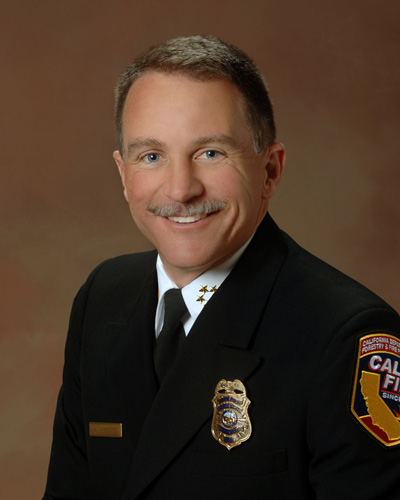 Though natural disturbance agents such as wildfire, drought, insects and disease eventually restore a balance in natural ecosystems, the drastic and periodic disturbances of catastrophic wildfires and large-scale tree mortality from bark beetles are not compatible with a population of 38 million people, many of whom like to live in a forested environment. All depend on forest lands for water and other ecosystem services.
Though natural disturbance agents such as wildfire, drought, insects and disease eventually restore a balance in natural ecosystems, the drastic and periodic disturbances of catastrophic wildfires and large-scale tree mortality from bark beetles are not compatible with a population of 38 million people, many of whom like to live in a forested environment. All depend on forest lands for water and other ecosystem services.The strong connection between healthy forests and a clean, reliable water source only underscores the need for swift and aggressive actions to mitigate the threat this epidemic poses to our forests.
On Oct. 30, 2015, Gov. Edmund G. Brown Jr. proclaimed a state of emergency, due to unprecedented levels of dead and dying trees in California. Based on U.S. Forest Service Aerial Detection Surveys, it is currently estimated that more than 29 million trees are dead due to pests, exacerbated by severe drought. New surveys in the current year are expected to double or triple that number.
Conditions are ripe for this epidemic to spread substantially in 2016, resulting in an increased threat to lives, property, critical infrastructure and California's precious natural resources.
Immediately following Gov. Brown's proclamation, a Statewide Tree Mortality Task Force was formed to assist local jurisdictions and implement the governor's directives. Comprised of more than 80 entities, the Tree Mortality Task Force represents federal, state, local and tribal governments, non-governmental organizations, and utility and energy companies. Task Force members and other stakeholders have prioritized the most critical needs and coordinated the expenditure of funds toward equipment, grant funding to address some of the most pressing hazards, and the redirection of existing state resources to address impacts posed by the widespread tree mortality.
Private, non-industrial land constitutes 25 percent of the 32 million acres of forested land base in California, and the majority of privately owned forest lands. Unfortunately, landowners often do not have the resources or the technical expertise to actively manage their properties. As a result, there continues to be a strong need for technical assistance and funding to assist these landowners with meeting their management objectives, including overall forest health and sustainability.
Cal Fire has partnered with the American Forest Foundation, the Natural Resources Conservation Service, individual counties and others, to reach out to private, non-industrial landowners affected by the tree mortality epidemic. The effort is focused on providing technical assistance and management planning, as well as grant funding to improve forest health conditions.
Forests in California are comprised of both public and private ownership, often intermixed within single watersheds. A large, landscape-level approach across multiple ownerships is going to be key to making real strides toward achieving healthy forests in California.
Cal Fire, along with the U.S. Forest Service, the Sierra Nevada Conservancy and many other partners, is working on implementing cross-boundary projects that leverage multiple programs, initiatives and funding sources. Projects will include a balanced mix of activities such as thinning, reforestation, prescribed burning and fuel reduction, intended to increase carbon storage in forests, reduce wildfire emissions and protect upper watersheds, where much of the state's water supply originates. This work will involve a multitude of partners, including large and small private landowners, federal and state agencies, conservation groups, the forest products industry and other stakeholders.
Recent interagency agreements will help provide tools and resources for working across these ownership boundaries. The Good Neighbor Authority, authorized under the federal farm bill, is an agreement between the California Natural Resources Agency and the U.S. Forest Service, allowing the signatory agencies to conduct restoration projects on the landscape seamlessly across ownership boundaries. In addition, a prescribed fire Memorandum of Understanding among the USFS, Sierra Forest Legacy, Cal Fire and other partners has been initiated that will help us apply prescribed fire to the landscape at a meaningful ecological scale.
Addressing California's forest health issues and engaging in active forest management in a meaningful way requires a long-term investment. No single agency, organization or program is going to solve the wide range of threats to California's forests alone. It is going to take a balanced approach of all the agencies, funding sources and management options available to address the impacts to California's forests as a result of an evolving climate.
Although the epidemic tree mortality we are facing is devastating, it has galvanized partnerships at all levels and placed a renewed interest toward engaging in our forests unlike any I have ever seen. With disaster comes opportunity.
(Ken Pimlott is Cal Fire chief and California state forester.)
Online fire-prevention information:
- www.prepareforbarkbeetle.org provides information to California residents on bark beetles, dead tree removal, tree health, defensible space and wildfire risk.
- www.readyforwildfire.org/Bark-Beetle-Campaign-Toolkit/ is for local partners to help inform residents about bark beetle identification, management and treatment. These materials are available for stakeholders to download.
- www.ReadyForWildfire.org provides information on how to protect your home and family from California's inevitable wildfires.
Reprinted with permission: California Farm Bureau Federation








